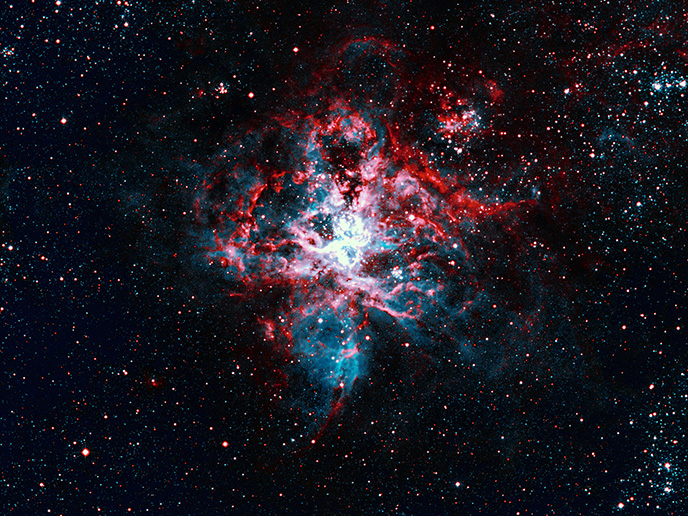New technologies for detecting dark matter
Almost all the energy that is stored in our universe exists as dark matter. Yet despite its abundance, we know surprisingly little about it. “Dark matter appears to interact mainly through the force of gravity and is likely composed of elementary particles that have yet to be identified,” says Marcin Kuźniak, group leader at the Particle Astrophysics Science and Technology Centre(opens in new window), an autonomous unit of the Nicolaus Copernicus Astronomical Center(opens in new window) (NCAC) of the Polish Academy of Sciences. However, this is just a hypothesis. What dark matter is and how it is generated remains one of the great unsolved problems of physics. But the curtain that has shrouded this mystery is starting to be pulled back, thanks in part to initiatives such as the EU and industry-funded DarkWave(opens in new window) project. DarkWave is developing new technologies that will enable the next generation of dark matter detectors used to observe the universe. “With the right technologies, these very large detectors, which are typically located in underground laboratories, could allow us to directly detect dark matter,” adds Kuźniak, who coordinated the project.
New technologies make detectors more sensitive
During the project, researchers from NCAC, together with four partner institutions(opens in new window) in France, Germany and Italy, developed a comprehensive portfolio of dark matter-detecting technologies. These include new wavelength shifter (WLS) materials and photosensors, along with new seismic and infrasound sensors that can be used to monitor the background noise levels around the detector. Researchers also created algorithms for signal processing and analysis that can be used to extract information from the data collected by the detectors. Furthermore, the project enabled scientists to purchase the materials they needed to conduct experiments, research and tests. “All these technologies and support help make detectors more sensitive than ever before,” notes Kuźniak.
Taking dark matter detectors to the next level
These technologies have already had a direct impact on the quest to understand the nature of dark matter. For example, the under-construction DarkSide-20k detector(opens in new window) is benefiting from novel fluorescent and reflective materials that were developed by the project. These materials will significantly improve the detector's light collection sensitivity while dramatically simplifying its construction. The project also helped establish two cryogenic test stands in Warsaw where these types of materials, along with ultra-modern arrays of photosensors, are now tested in representative conditions prior to being installed in the detector. In addition, DarkWave also brought the dark matter and gravitational wave communities together. For instance, new networks of seismic and infrasound sensors for monitoring backgrounds at the Virgo gravitational wave observatory(opens in new window) were developed and tested during the project. They were also used to map the seismic and infrasound environment at the DarkSide-20k underground experiment site.
Helping young scientists get hands-on experience
Beyond the technology, the project focused on supporting young scientists and early-stage researchers, and on advancing the project host's capabilities through collaboration with advanced partner institutions. With the project's support, these researchers were able to take part in several measurement campaigns at CERN(opens in new window) and Virgo, amongst others. “The mobility granted by DarkWave became a catalyst for knowledge accumulation and experience gathering, making it one of the project's most substantial and important outcomes,” remarks Yuliya Hoika(opens in new window), EU project coordination specialist at NCAC. These researchers, along with the entire project team, are now poised to continue to advance the knowledge, networking and innovative ideas fostered by DarkWave. This includes exploring the potential to commercialise some of the solutions developed during the project, as well as launching STELLAR with the support of the Marie Skłodowska-Curie Actions(opens in new window) programme, and the EU-funded project Astrocent Plus, both Horizon Europe projects.







